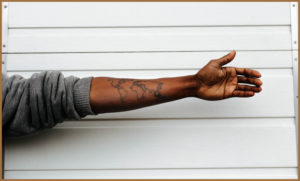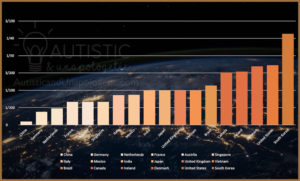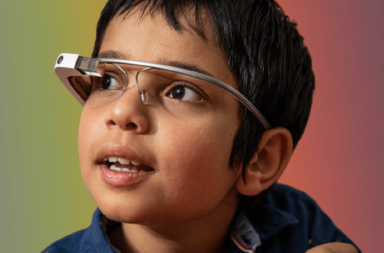Depending on the year, country and sample size, guesses regarding how many people have autism can vary anywhere between 1 in 10,000 to 1 in 38. However, given that these statistics leave more room for interpretation than apparently every FedEx delivery address I have ever given, I’m sure you’ll agree that the ‘How many people have autism guessing game’ shouldn’t end there.
So, in this article, you will find an ever-changing list of how many people have autism per country (except for Russia and North Korea because, you know) as well as a look into what is driving autism rates around the world.

How many people have autism?
Autism rates are on the rise, no one is going to deny that. But did you know that the actual chances of bumping into a diagnosed autist vary vastly, depending on the street you happen to find yourself on?
This can be seen in the statistics below where, using the finest tools in Google Scholar’s repertoire, I have put together (and alphabetized) a list of how many people have autism per country. If you have a second, familiarize yourself with these findings and take note of the weirder ones like, South Korea’s huge autism prevalence, China’s virtually invisible demographic or that Japan has a largely consistent autism rate – despite a ban on the MMR vaccine 7 years ago:
- Australia: 1 in 150 (2017)
- Brazil: 1 in 88 (2015)
- Canada: 1 in 66 (2018)
- China: 1 in 10000 (2019)
- Denmark: 169 in 10000 (2018)
- France: 1 in 150 (2012)
- Germany: 19 in 5000 (2016)
- India: 1 in 100 (2018)
- Ireland: 1 in 65 (2016)
- Italy: 38 in 4417 (2018)
- Japan: 1 in 100 (2018)
- Mexico: 1 in 115 (2016)
- Netherlands: 3 in 100 (Oct 2019)
- Singapore: 1 in 150 (2016)
- South Korea: 1 in 38 (2011)
- United Kingdom: 1 in 100 (2013)
- United States: 1 in 54 (2020)
- Vietnam: 1 in 100 (2019)

(International Autism Prevalence September 2019)
Okay, so that was probably a lot to take in and you are probably full to the brim with new information. But, before you do walk away, satisfied with those figures, it’s important to realise that not everything is quite as it seems in the world of measuring autism rates.
Firstly, as no one has a definitive answer as to what autism really is, tests for the condition can (and do) vary widely around the world. Take for example the culturally similar countries of Canada and France. While both are considered to be ‘Major developed economies’, France’s screening of the condition is said to be behind the western world by almost 50 years! As oppose to Canada’s autism scene which has thrived as of late.
Furthermore, it’s also been reported that while some countries do have the right tools for the autism diagnosis job, they lack the experience to use them correctly. I mean South Africa, I love ya, your wildlife is second to none and Neil Blomkamp is a gem of a director but even with the widely used DSM-5 as your go-to diagnosis manual, you let SO many other factors allow you to overlook as many as 90% of all autism cases. That’s not great.
Additionally, it’s also the case that, in some countries, the data we have for the percentage of people with autism is so out of date that even floppy disk enthusiasts would laugh at it. This can be seen by the glaring holes in the graph like Poland and New Zeland. However these gaps were necessary, as their inclusion would have been nothing but misleading (although I will update this page if they update their records).

Should we be worried about how many people have autism?
Of course, with the news that autism rates are on the up and our explanations being so diverse that even the ‘more autistic people having autistic children’ conspiracy sounds plausible, it was always expected that the hysteria brigade would arrive on the scene and plague our community with anti-vax protests and labels of a ‘global crisis’ (and those are the nice ones).
However, the increasing number of people on the spectrum isn’t a negative and it’s definitely not an epidemic. It’s an awakening; an opportunity for more people to find support in the challenges to come and more chances for people to gain access to an identity which might once have been lost.
This is truly magnificent when it’s considered that, not 40 years ago, all a diagnosis meant was that the less independent autists were locked away in cells, whilst the rest of us would feel pressured to suppress our quirks.
But look at us now! Our enhanced understanding of the spectrum has seen autism therapies excel, it’s seen community members become industry leaders and it’s meant that activities that were once sealed off from us, like cinema trips and shopping experiences have been reopened under the awesomeness that is Autism Hour.
As such, when you hear that more and more autistic people are being diagnosed, don’t be scared of the unknown and view it as a dam about to collapse. Instead, embrace the high autism rates as a natural progression and view the trapped water as returning right to where it always should have been.

Carry on the Conversation:
What do you make of the different autism rates? Have I missed any which you would like me to include? Let me know in the comments below and I will do my best to find out. And, if you would like to stay up to date with latest autism discoveries – including changing autism rates, then make sure to check out my monthly autism news catchups: Autism News Archives
As always, I can also be found on Twitter @AutismRevised and via my email: AutisticandUnapologetic@gmail.com.
If you like what you have seen on the site today, then show your support by liking the Autistic & Unapologetic Facebook page. Also, don’t forget to sign up to the Autistic & Unapologetic newsletter (found on the sidebar on laptops and underneath if you are reading this via mobile) where I share weekly updates as well as a fascinating fact I have found throughout the week.
Thank you for reading and I will see you next Saturday for more thoughts from across the spectrum.


